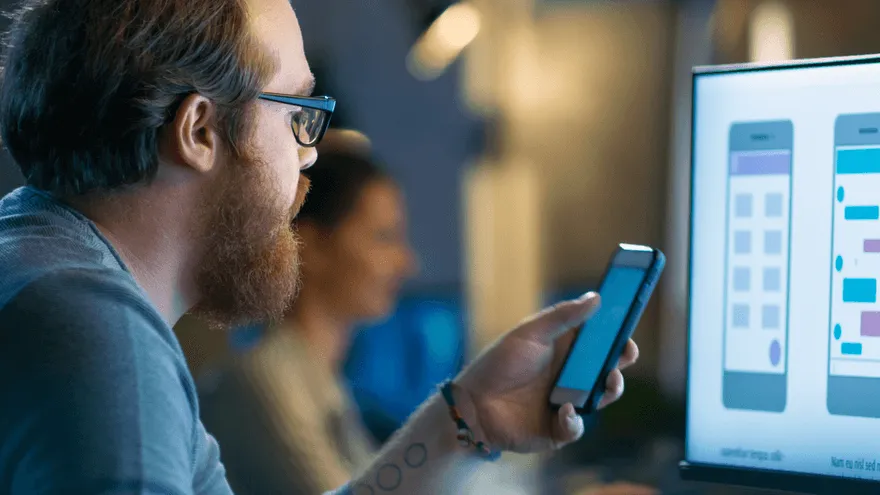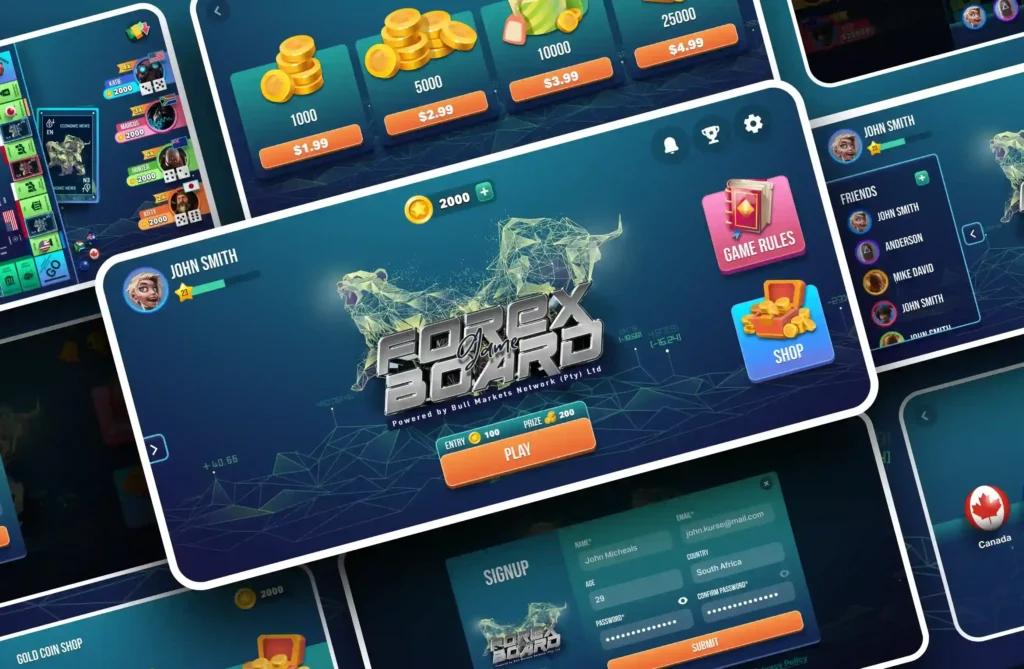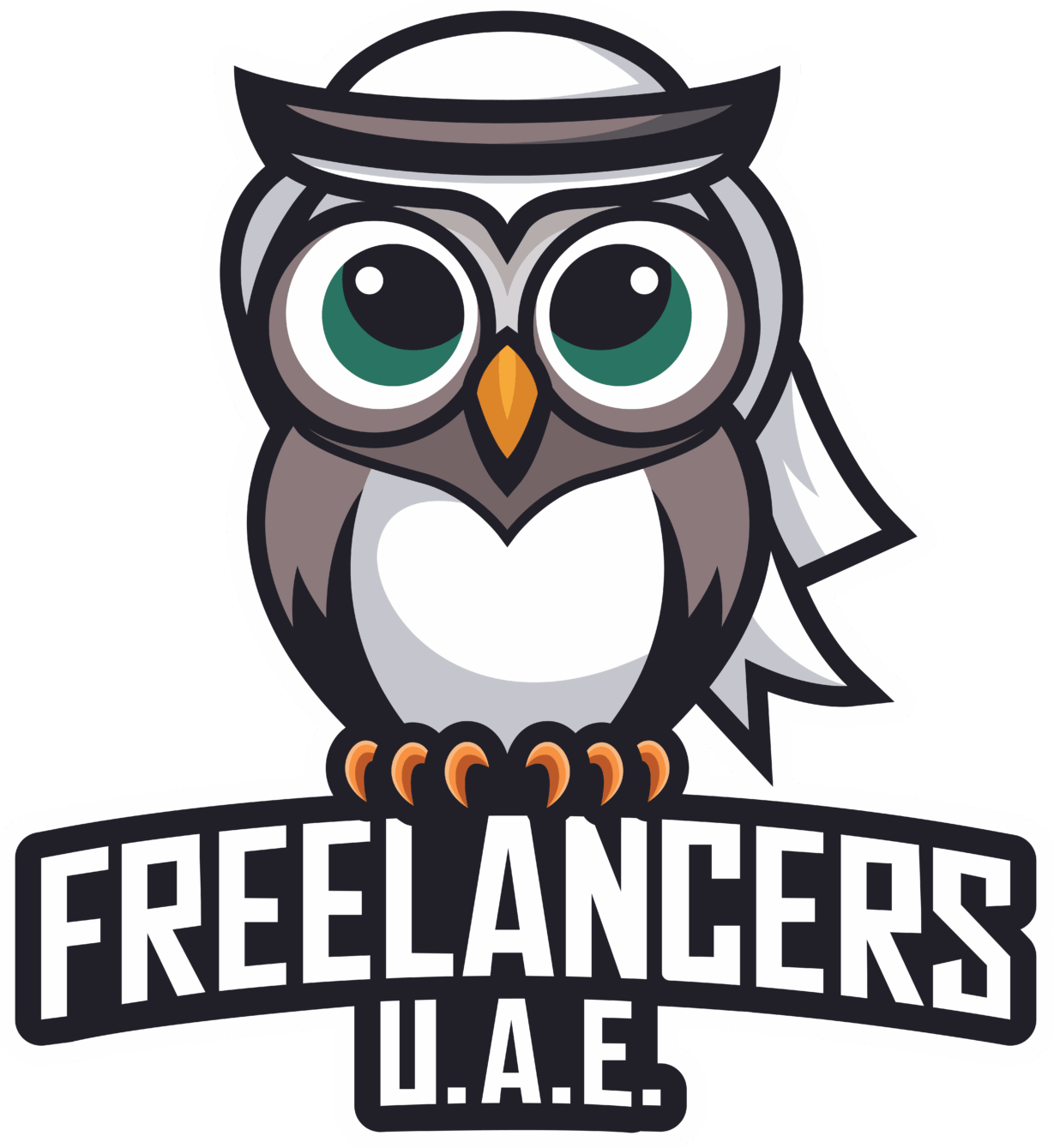?️ 1. Introduction: Why Choose a Career as a Freelance Game UI/UX Designer?
The gaming industry is booming. With mobile, console, AR, VR, and indie games dominating digital entertainment, UI (User Interface) and UX (User Experience) design have become increasingly crucial. These elements ensure players enjoy a seamless and engaging experience.
Choosing to become a Freelance Game UI/UX Designer in 2025 is not just a career move—it’s a lifestyle. Freelancing offers flexibility, creative control, and access to a global market of game studios and startups.
Whether you’re an aspiring designer or a working professional looking to switch paths, this comprehensive guide will help you navigate your journey toward becoming a successful Freelance Game UI/UX Designer.

? 2. What Does a Freelance Game UI/UX Designer Do?
A Freelance Game UI/UX Designer is responsible for creating interfaces that allow players to interact with a game intuitively and enjoyably. This role involves a mix of art, psychology, and tech.
? Key Responsibilities:
- ? Designing menus, HUDs (Heads-Up Displays), icons, and navigation.
- ? Conducting user research and usability testing.
- ? Creating wireframes, flowcharts, and prototypes.
- ?️ Collaborating with developers, artists, and game producers.
- ? Ensuring the UI/UX adapts across various devices and platforms.
Whether it’s a sci-fi shooter or a cozy farming sim, a game needs a clean, immersive, and user-friendly interface—something only a skilled Freelance Game UI/UX Designer can deliver.
? 3. Educational Background: Do You Need a Degree?
You don’t necessarily need a traditional degree to become a Freelance Game UI/UX Designer, but having formal education can give you a solid foundation.
? Useful Degrees:
- Graphic Design
- Interaction Design
- Game Development
- Computer Science
- Cognitive Psychology
If you’re self-taught, focus on building a killer portfolio and gaining hands-on experience through small projects, game jams, or internships.
?️ 4. Essential Skills to Master
To stand out as a Freelance Game UI/UX Designer, you need both technical know-how and soft skills.
? Must-Have Technical Skills:
- Proficiency in tools like Figma, Adobe XD, Sketch, and Photoshop.
- Familiarity with Unity or Unreal Engine.
- Knowledge of game development pipelines.
- Understanding of responsive UI for various devices.
? Soft Skills That Matter:
- Communication and collaboration
- Problem-solving and creativity
- Time management and self-discipline
- Adaptability and a learning mindset
The better you are at combining UI aesthetics with UX logic, the more in-demand you’ll be as a Freelance Game UI/UX Designer.
?️ 5. Build a Portfolio That Gets You Hired
A strong portfolio is your biggest asset as a Freelance Game UI/UX Designer. It shows clients not just what you can do, but how you think.
?️ What to Include:
- UI mockups and interactive prototypes
- Game menus and HUD concepts
- UX case studies with process breakdown
- Personal game projects or contributions to indie titles
Pro tip: Create a branded personal website to host your portfolio. Add testimonials and a clear call to action like “Hire Me as Your Freelance Game UI/UX Designer.”

? 6. Practice with Real or Simulated Projects
Clients want proof of experience. If you’re just starting, practice your craft with side projects or redesigns.
? Sample Exercises:
- Redesign a classic game’s HUD or menu.
- Create a UX flow for a mobile RPG.
- Participate in game jams like itch.io.
Frequent practice enhances your design instincts and makes you job-ready faster as a Freelance Game UI/UX Designer.
? 7. Where to Find Freelance Game UI/UX Jobs
Finding clients is often the hardest part of freelancing. Thankfully, several platforms and communities help Freelance Game UI/UX Designers find paid gigs.
? Top Freelance Platforms:
? Game Dev Specific Platforms:
Networking in gaming, Discord servers, and LinkedIn groups can also help you land consistent work as a Freelance Game UI/UX Designer.
? 8. Setting Your Rates as a Freelance Game UI/UX Designer
Pricing is tricky. You don’t want to undercharge and be undervalued, or overcharge and scare away potential clients.
? Pricing Models:
- Hourly: $25–$75+ depending on experience
- Per Project: $500–$5000+ depending on scope
- Retainers: Monthly packages for long-term clients
Make sure your pricing reflects the value you provide as a Freelance Game UI/UX Designer—not just your hours.
? 9. Branding Yourself as a Freelance Game UI/UX Designer
You’re not just a designer. You’re a brand. Clients need to know what makes you different.
? Key Branding Tips:
- Create a memorable logo and personal brand identity.
- Maintain consistency across platforms (portfolio, LinkedIn, email).
- Post your work regularly on Twitter/X, LinkedIn, and Behance.
- Use storytelling in your case studies.

? 10. Contracts and Legal Basics
Every Freelance Game UI/UX Designer should use contracts to protect both themselves and their clients.
? What to Include in Contracts:
- Scope of work
- Payment terms
- Timeline and deliverables
- Ownership and licensing
- Termination clauses
Also, consider registering as a business and exploring digital contract platforms like HelloSign or Bonsai.
? 11. Project Management Tips for Solo Designers
As a Freelance Game UI/UX Designer, you wear many hats. Managing projects effectively is essential to avoid burnout and missed deadlines.
?️ Use These Tools:
- Trello: Project tracking
- Notion: Task management & notes
- Clockify: Time tracking
- Slack: Communication
Create systems so you can focus more on design and less on admin work.
? 12. Marketing Yourself Without Being Pushy
Marketing is not just ads—it’s showing the world your value. As a Freelance Game UI/UX Designer, let your work speak for itself.
? Marketing Strategies:
- Start a blog or YouTube channel on UI/UX tips.
- Host livestreams or tutorials.
- Offer freebies like UI kits.
- Send cold emails to indie game studios with personalized pitches.
The key is to be visible, helpful, and authentic.
? 13. Getting Feedback and Growing from It
Design is a feedback-rich field. Be open to critique—it sharpens your skills and improves your output as a Freelance Game UI/UX Designer.
? Where to Get Feedback:
- Reddit communities like r/gamedev or r/userexperience
- Discord groups for game design
- Twitter/X feedback threads
- Portfolio review events and game jams
Use feedback to iterate, not to doubt yourself.

? 14. Level Up with Courses and Certifications
To stay competitive as a Freelance Game UI/UX Designer, keep learning. Trends shift, tools evolve, and player expectations grow.
? Recommended Courses:
- Coursera – UI/UX Design Specialization
- Interaction Design Foundation
- Gnomon School – Game UI Design
- Skillshare Game UI/UX Classes
Certifications aren’t always necessary, but they can build credibility and confidence.
? 15. Common Mistakes to Avoid
Even seasoned freelancers make mistakes. Learn from others so you don’t repeat them.
❌ Common Pitfalls:
- Not using contracts
- Undervaluing your rates
- Ignoring UX testing
- Overloading your portfolio
- Chasing trends over user needs
Your journey as a Freelance Game UI/UX Designer will be smoother if you avoid these rookie errors.
? 16. Future of Freelance Game UI/UX Design
The rise of AR, VR, cloud gaming, and AI is reshaping the field. Demand for Freelance Game UI/UX Designers will only grow in the coming years.
? Trends to Watch:
- Haptic feedback integration
- Voice-based UI
- Accessibility-first design
- AI-assisted design tools
Stay ahead of the curve, and you’ll never run out of work.
? 17. Conclusion: Your Next Steps
Becoming a Freelance Game UI/UX Designer is a challenging yet rewarding career path. It combines your love for gaming with creativity, psychology, and technology.
✅ Here’s a quick recap:
- Learn the essential skills and tools
- Build a portfolio that reflects your style
- Market yourself with authenticity
- Stay updated and embrace feedback
Start today. Redesign a game menu. Apply for your first gig. Post a case study. Every step takes you closer to success in the dynamic world of freelance game design.

